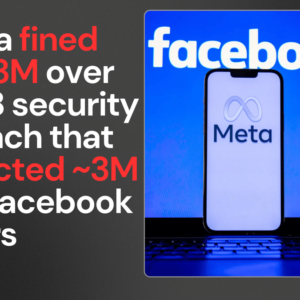Have you ever hit the “delete” button on your computer and felt a wave of relief? You might think that your files are gone for good, but here’s the catch your data never truly gets deleted from your computer. This common misconception can lead to serious risks, especially if sensitive information is involved. Imagine tossing a piece of paper in the trash, only to find out that it’s still sitting in the bin, waiting to be picked up! In this blog post, we’ll explore how file deletion works, why erased data can often be recovered, and what you can do to ensure your information is truly gone.
How File Deletion Works
The Deletion Process
When you delete a file on your computer, it doesn’t vanish into thin air. Instead, your operating system (OS) simply marks that space as “available” for new data. Think of it like crossing out a name on a list but keeping the paper intact. The file still exists on your hard drive until new information takes its place.
For example, if you delete a photo from your computer, the OS removes it from the visible folder but leaves the actual data untouched. This is why recovery tools can often retrieve files that you thought were gone forever.
Why Deleted Files Remain Accessible
When you delete a file, the OS changes its status to “deleted,” but the data remains on the disk until it’s overwritten by new files. This means that anyone with the right tools can potentially recover those files. Recovery software scans your hard drive for these marked spaces and can often bring back what you thought was lost.
Imagine playing hide and seek with your data even though you think it’s hiding away, it’s still there waiting to be found!
Can Erased Data Be Recovered?
Understanding Data Recovery Tools
Yes! Tools designed for data recovery can often retrieve files marked as “deleted.” These programs work by searching through your hard drive for remnants of deleted files. They look for patterns and fragments that remain after deletion. For instance, if you accidentally delete an important document, recovery software might help you find it again—unless that space has been reused.
Real-Life Example: Recovering Deleted Files
Let’s say you deleted a school project from your computer last week. If you haven’t saved many new files since then, there’s a good chance that recovery software could get that project back for you. However, if you’ve been busy working on other projects and saved new files in its place, the old project may be overwritten and lost forever.
Permanent Deletion Methods
Techniques for Truly Deleting Data
If you want to ensure that your data is permanently gone, consider these methods:
- Disk Wiping: This process overwrites all data on your hard drive with random information multiple times. It makes recovery nearly impossible.
- Overwriting Files: You can manually overwrite files by saving new data in their place several times before deleting them.
- Specialized Software: There are programs specifically designed to permanently delete files by overwriting them securely.
Using these methods ensures that even the most skilled recovery tools can’t bring back your sensitive information.
Practical Tips for Protecting Sensitive Information
Before Selling or Donating Your Device
If you’re planning to sell or donate your computer or phone, take extra precautions:
- Back Up Important Files: Always save essential documents to an external drive or cloud storage before wiping your device.
- Use Disk Wiping Software: Make sure to use reliable disk wiping software to erase everything on the device thoroughly.
- Remove Accounts and Personal Info: Log out of all accounts and remove personal information before parting with your device.
By following these steps, you’ll protect yourself from potential identity theft or unauthorized access to your personal information.
Conclusion: Understanding Data Permanence
In conclusion, understanding that your data never truly gets deleted from your computer is crucial in today’s digital age. Knowing how file deletion works and the potential for data recovery can help you take necessary precautions to safeguard your personal information. Whether you’re cleaning up old files or preparing to sell a device, remember that just hitting “delete” isn’t enough!
By using proper deletion techniques and being mindful of what happens after you hit that button, you can ensure that your sensitive information stays safe and sound.












